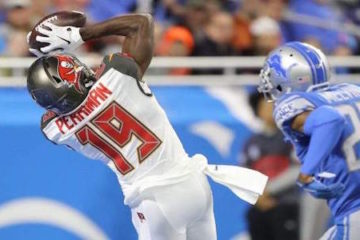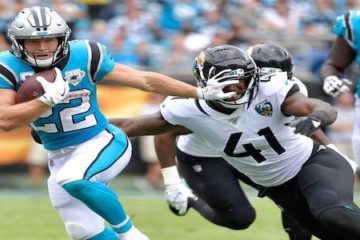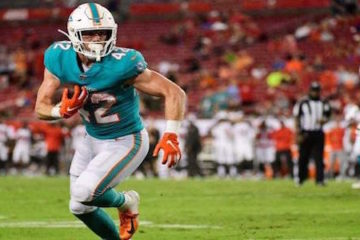2012 Fantasy Baseball Draft Day Advice: How to draft your team the right way
I’ve done countless mocks and thought about draft strategy way too much. As a result, I pretty much have an idea of how my drafts will play out depending what I take in the first three rounds. Below is a flow chart I’ve come up with for what to do in the first 13 rounds of a ten-team mixed league (the last 12 rounds are addressed in this article). You’ll see that it tells you exactly what to do based on who you take in the first round. It’s probably best suited for ESPN users given that it is the site I play on and their rankings dictate whereabouts players will be drafted in the drafts I am involved in.
Read the rest of this article in conjunction with my flow chart to optimize your draft strategy. Hopefully, this article will help you know exactly what to do with each of your 25 picks.
As you can see from the chart, you must select a 1B, SS or OF in the first round. These are the shallowest positions this year. The top six first basemen are all going in the top 25, and there is a significant drop off at the position after those six. It is important you get the top end, safe production one of these guys will provide.
Shortstop is always shallow and after
Troy Tulowitzki, Jose Reyes, and Hanley Ramirez it gets real ugly real quick. You’ll want to get one of these three in the first two rounds if at all possible. And outfield is super thin in five outfield leagues like ESPN uses. At least one OF is necessary early so that you can fill out all five OF spots by the midway point in the draft.Because 1B and SS may not be available in the 3rd and because several good outfielders are going in that round, try to start SS-1B or 1B-SS.
Ideally your first three picks will look something like these examples:
· Tulo, Fielder, Holliday
· Votto, Hanley, McCutchen
· Pujols, Reyes, Stanton
Rounds 4-5
You’ll notice that any track down the flow chart is fairly light on pitching as every track calls for only three SP in the first 13 rounds. Pitching is the deepest position and (thanks to advanced stats) the position at which it is easiest to find undervalued players. However, when you plan on filling out the back half of your pitching staff after the midway point in the draft, it is important to have one ace to anchor your staff. At this point in the draft you should target
CC Sabathia, Zack Greinke, or David Price as your stud.If you got two OF in the first three rounds, grab a pitcher in the 4th and then get you a high end catcher like
Carlos Santana or a safe, second-tier second baseman like Ben Zobrist, Brandon Phillips, or Dan Uggla (target them in that order).If you didn’t get two OF in the first, get a pitcher and another OF in either order in this range.
Rounds 6-9
This is where things start to get a little fractured. The only thing you should definitely be doing in this range is adding two outfielders.
Shane Victorino (6th), Carl Crawford (6th), Michael Morse (7th) Shin Soo-Choo (8th), Jayson Werth (9th),and Desmond Jennings (9th) are the OFs to target here.Outside of that requirement, you have several options for your other two picks in this range. If one of the 2Bs discussed above falls into this range, grab one in the 6th. If you missed out on the big three SS and believe
Starlin Castro is going to take the next step, get him in the 6th. If you missed out on the big six 1B, then take Eric Hosmer in the 6th or Morse in the 7th. If you like the reliability of Brian McCann, draft him in the 7th. If you haven’t given up on Matt Wieters (I haven’t), take him in the 9th.Older third baseman like
Alex Rodriguez and Kevin Youkilis could provide nice value in the 7th or 8th. A younger third baseman in Mark Reynolds can safely be taken in the 9th because of all the production he’ll get you everywhere other than batting average. And if you just don’t feel comfortable waiting so long on pitching, a guy like Mat Latos, Matt Garza, or Josh Beckett should be be available in the 9th round. Or, even better, Madison Bumgarner might still be available.Rounds 10-11
At this point you should already have four outfielders, so now it’s time to fill in whatever else you didn’t get in rounds 6-9. If you missed out on catcher,
Buster Posey might still be available and might provide big value. If you missed out on second base, Howie Kendrick is a nice option because it’s hard to find someone who does a little bit of everything this late in drafts. If you missed out on shortstop, Alexei Ramirez is a fairly safe option, and JJ Hardy is intriguing as a guy with some pop. And if you still only have one pitcher, Garza or Beckett group should still be available at this point.Rounds 12-13
It’s time to complete your outfield and see your pitching staff start to take shape. Ideally
Drew Stubbs, Jason Heyward, or Chris Young is still around to fill out an exceptional outfield group. If not, punt that last spot and we’ll take a shot on a guy later.For your 3rd pitcher, target
Brandon Beachy, Shaun Marcum, and Anibal Sanchez. You probably won’t end up with three top 30 starting pitchers, but that’s OK. You can make up for it getting three more top 50 caliber guys late and a sleeper option in one of your three bench slots.The flow chart ends here because things get quite a bit less complicated from here.
Round 14
Closer time. There is absolutely no reason to take a closer earlier than this when guys like
Heath Bell, Joakim Soria, and Andrew Bailey are available in this range. All three could easily be top-10 caliber closers this year.Rounds 15-18
One starter, one reliever, corner infield, and middle infield in any order you choose.
Taking a pitcher first of that group is probably the best idea given that we’ve focused on that position the least up until this point. It’s also probably the right move because the best pitchers in this range,
Hiroki Kuroda and Jaime Garcia, will likely go in the 15th or 16th round.After that you can get any of the closers mentioned above that fall to the 16th round, or you could take
Huston Street or Carlos Marmol in the 17th or 18th. There are a ton of middle infield options in Dustin Ackley, Jason Kipnis, Kelly Johnson, Aaron Hill, and Jemile Weeks. Personally, I would wait until the 18th and hope Johnson falls there and grab Hill or Weeks if he doesn’t. If choosing between Hill and Weeks, do a quick assessment of your team and see if you’re shorter on power or speed. If you need speed, go Weeks. If you need power, go Hill.For your corner infield spot, take
Adam Dunn. Just reach for him here and get it over with. There’s so much value potential that it would be crazy not to take him at this point. If he sucks just as bad as he did last year, it’s no big deal. You’ll be able to find a serviceable corner guy on the waiver wire a month into the season.Rounds 19-21
It’s time for another pitcher. In ESPN leagues,
Ricky Nolasco has been going WAY too late in drafts. I think he’s a top 40 pitcher this year, so take him in the 19th if he’s still available. If not, grab Bud Norris, Gavin Floyd, or Ryan Dempster in that slot (target in that order).From there you can grab your third closer and a UTIL hitter in the 20th and 21st. At closer you can go with
Joe Nathan, Sergio Santos, or Brett Myers. And at UTIL you should take a guy who can strengthen a position or category where you are weak. For example, if you never filled that fifth outfield spot, you could go with Alex Rios and hope for a bounce-back or go with the young Jose Tabata. If you need some power, go after Lucas Duda or Edwin Encarnacion. If you need speed, go with Emilio Bonifacio who should be a great value with his SS eligibility.Rounds 22-23
This is where you should round out your pitching staff. Maybe Norris or Dempster fall into this range if you didn’t select them earlier. If they’re gone, go after guys like
John Danks, Derek Holland, or Jhoulys Chacin. You could also gamble on Jake Peavy throwing 150+ innings. Because good WHIP is so hard to find late in drafts, consider reaching for Toronto’s Henderson Alvarez. The kid has excellent control and a lot of potential. And I may be one of the few to recommend this but Jonathon Niese and Chris Capuano wouldn’t scare me as a 7th starter. You’re likely going to end up streaming that spot anyway and those guys will be stream-worthy.Rounds 24-25
Time to go for some upside. Maybe
Gordon Beckham can finally get it together. Will Mat Gamel be the next Matt LaPorta or the next Michael Morse? Maybe Yoenis Cespedes gets to the majors quickly and rakes. Hell, maybe Bryce Harper gets to the majors quickly and rakes. And if you didn’t take Tabata earlier because your outfield was full, this is the time to do it. Those are just a few high upside plays I kind of like, but if you have a hunch on someone, here’s your shot to see it if pans out.Written by Brett Talley exclusively for thefantasyfix.com. Brett is a law student in Dallas who might have gone a little overboard with this article. You can tell him to get a life and/or ask him for fantasy advice on Twitter @therealTAL.
Remember to check out our 2012 Fantasy Baseball Draft Guide, with Ranks, Auction Values, Expert Mock Draft and tons of articles. Click here to learn more or purchase.







